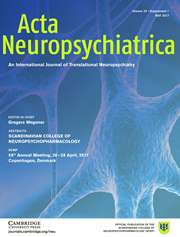
“Cannabinoids impact human body by binding to cannabinoids receptors (CB1 and CB2).
The two main phytocannabinoids are Δ9-tetrahydrocannabinol (THC) and cannabidiol (CBD).
THC interacts with CB1 receptors occurring in central nervous system and is responsible for psychoactive properties of marijuana. CBD has low affinity to CB1 receptor, has no psychoactive characteristics and its medical applications can be wider.
CB receptors are part of a complex machinery involved in regulation of many physiological processes – endocannabinoid system.
Cannabinoids have found some applications in palliative medicine, but there are many reports concerning their anticancer affects.
Agonists of CB1 receptors stimulate accumulation of ceramides in cancer cells, stress of endoplasmic reticulum (ER stress) and, in turn, apoptosis. Effects of cannabinoids showing low affinity to CB receptors is mediated probably by induction of reactive oxygen species production.
Knowledge of antitumor activity of cannabinoids is still based only on preclinical studies and there is a necessity to conduct more experiments to assess the real potential of these compounds.”
https://content.sciendo.com/view/journals/fobio/12/1/article-p11.xml








